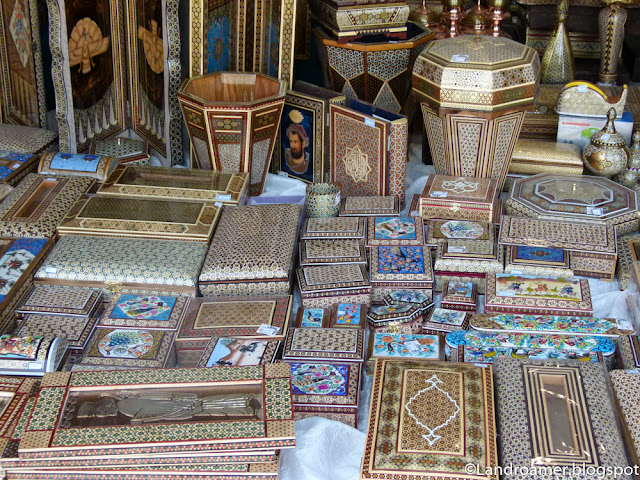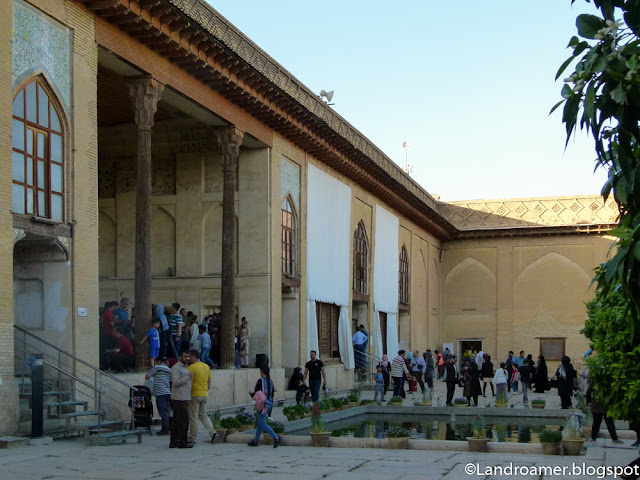Naranjestan Museum
Qavam House
("Narenjestan e Ghavam") is a traditional and
historical house in Shiraz. It was built between 1879 and 1886 by Mirza
Ibrahim Khan. Today, the house today is a museum open to the public.
The Qavam
"Naranjestan" preserves the elegance and refinement enjoyed by the
upper-class families during the 19th century. The paintings on the low ceilings
of the house are inspired by Victorian era Europe. The mirrored porch was a
focal point of the house, overlooking a small garden that was designed with
fountains, date palms, and flowering plants.
Tomb of Hafez
The Tomb of
Hafez and its associated memorial hall, the Hāfezieh, are two memorial
structures erected in the northern edge of Shiraz, in memory of the celebrated
Persian poet Hafez. The present buildings, built in 1935 and designed by the
French architect and archaeologist André Godard, are at the site of previous
structures, the best-known of which was built in 1773.
Khwāja
Shams-ud-Dīn Muḥammad Ḥāfeẓ-e Shīrāzī, (1315-1390) known by his pen name Hafez,
was a Persian poet who "lauded the joys of love and wine but also targeted
religious hypocrisy. His collected works are regarded as a pinnacle of Persian
literature and are often found in the homes of people in the Persian speaking
world, who learn his poems by heart and still use them as proverbs and sayings.
Karim Khan Castle
The Karim
Khan Castle is a citadel located in downtown Shiraz. It was built as part of a
complex during the Zand dynasty and is named after Karim Khan, and served as
his living quarters. In shape it resembles a medieval fortress.
At times,
the citadel was used as a prison. Today, it is a museum operated by Iran's
Cultural Heritage Organization.
Quor'an gate
Qur'an Gate is a historic gate in the north of Shiraz. It is located at the northeastern entrance of the city, on the way to Marvdasht and Isfahan.
Vakil Bazaar
Vakil Bazaar is the main bazaar of Shiraz, located in the historical center of the city.
It is thought that the market originally was established by the Buwayhids in the 11th century AD, and was completed mainly by the Atabaks of Fars, and was renamed after Karim Khan Zand only in the 18th century.
The bazaar has beautiful courtyards, caravansarais, bath houses, and old shops which are deemed among the best places in Shiraz to buy all kinds of Persian rugs, spices, copper handicrafts and antiques.
Like other Middle Eastern bazaars, there are a few mosques and Imamzadehs constructed beside or behind the bazaar.
Meandering through the town center




















































